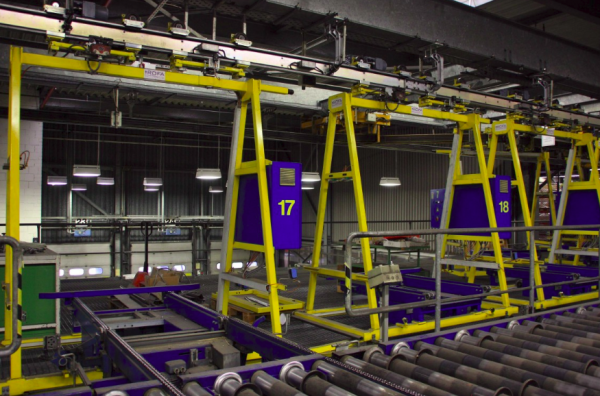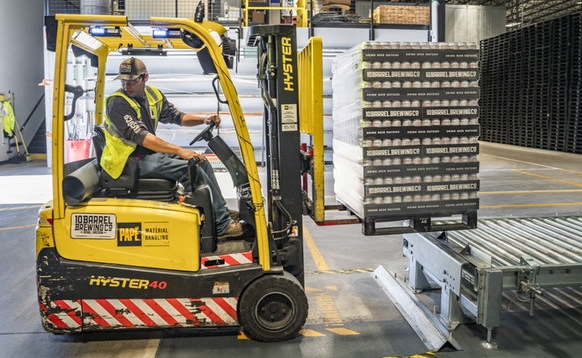We like to think of “time is money” as just a cliche phrase, but it rings true with warehouse success. Success isn’t something that happens overnight, so yes, it takes a while, but how much time you need to make it in a world of competition can depend on you.
The longer it takes, the bigger the costs and the losses, naturally, meaning it’s in your interest to take warehouse investments seriously. Time is of the essence, and regardless of your inventory, how small or big the warehouse is, the key is in making the right purchases in terms of goods transportation equipment since loading and unloading containers are the basic operations. You have to count on the ingenious design of the conveyor equipment to make the process more efficient, finishing up the tasks quickly and in bigger amounts; in other words, focus on the variety of destinations and products.
The Beginnings
Same as there is not one universal type of warehouse, there isn’t one type of conveyor equipment, so you can expect to choose from a wide range based on the specific needs of your workplace. Though it’s a design that’s been around for centuries, since the 18th century to be exact with the beginnings being primitive conveyor belts created from leather or canvas intended to serve as carrying medium, thanks to modern technology there have been many improvements over the decades in the manufacture, choice of materials, capacity, and features. This goes to show why conveyors make such a great addition to the modern warehouse: as they make distribution efficient they result in cutting down labour. At the same time there’s increase in the goods that are shipped or received, and this translates as long-term success.

The Different Types of Conveyors
You can expect to come across versatility, but the basic differentiation would be non-powered and powered conveyor equipment. As their names imply, non-powered, also known as gravity, rely on mere physics to carry on with the movement of products, whereas powered work on electric power. So while you have both the simpler option and the more sophisticated one to choose from, remember that sophisticated means less maintenance, including quick and easy setup and dismantling. These properties are useful when it comes cutting down cleaning too.
Non-powered conveyors can be found in the roller and skate wheels variants, with the roller going well with high speed sorters as it slows down the products which makes it ideal to be paired with workstations, as opposed to the skate wheels that maintain the speed.
Non-powered conveyors can be found in the roller and skate wheels variants, with the roller going well with high speed sorters as it slows down the products which makes it ideal to be paired with workstations.
Available in the light duty versions, made of light materials like aluminium, they are suitable for the smaller packages, while the medium duty are what’s considered the standard. If you need them for the toughest of jobs, however, then the steel heavy duty gravity option is the one for you.
As for the powered, there are many offered for a wide range of applications, as the trough, slider, and box style slider, but one that’s famous for the carrying of items upwards, working against gravity, is the electric expanding roller conveyor. Flexible in design, it can be joined to create a continuous powered system. Other types include belt driven roller conveyors, and line shaft driven. You can complete the setup also using the help of some accessories, in the example of guard rails, stops, and supports.
Other than this, there are more aspects you would have to think about when making the purchasing decision, starting from the importance to consider the warehouse operation itself, followed by the size, weight, as well as the application of the products, and the other types of material handling equipment you have.
The Not So Obvious Benefit
As mentioned, the reduction in labour thanks to these systems is great, so the point of introducing them in the warehouse is to maximise their use while minimising that of the employees, and this refers to the manual lifting of items, as much as it does with the pulling, and pushing. This is what makes them the ergonomic investment that you didn’t see coming, and the result is the lessened risk of musculoskeletal issues; it doesn’t take long to see why it’s beneficial for the company as much as the employees. To avoid further body strain from reaching too far for products or moving them along the conveyor line, and letting the system do more of the work respectively, it’s advisable to turn to solutions like the use of ball transfers that would allow for easy positioning of the items, and pushers for making the work even more ergonomic.
Also, depending on the height of the employees, you have to make sure the conveyor height matches the height of the knuckles’ position of every employee so there is less bending when working with the loads. If the average position doesn’t suit most of the employees, then perhaps you should consider the possibility of grouping them based on how tall or short they are. In addition, it’s good to sort the loads based on their heights too, which would make work much easier than when dealing with a variety of size ranges.

